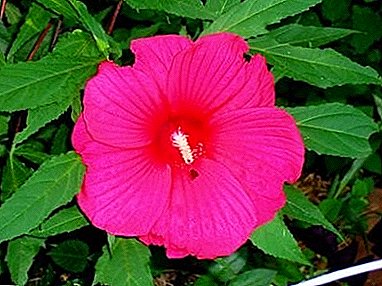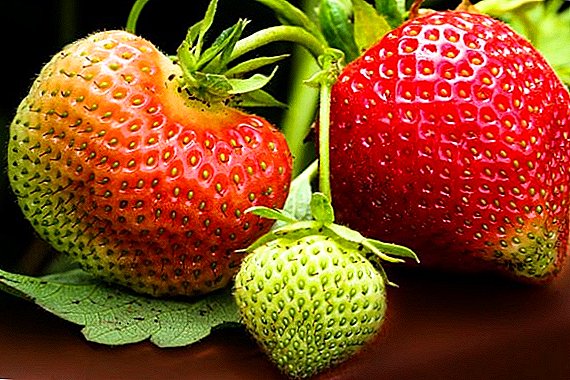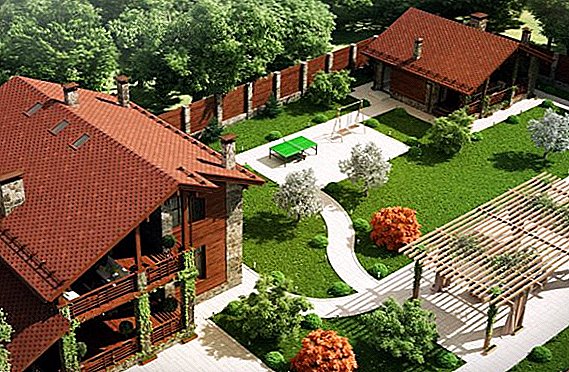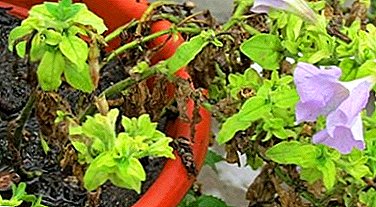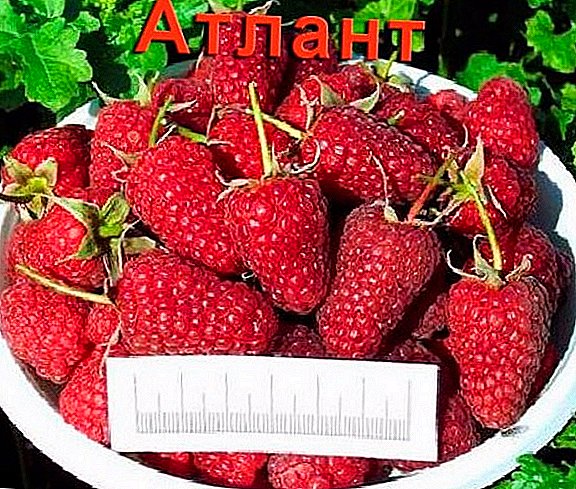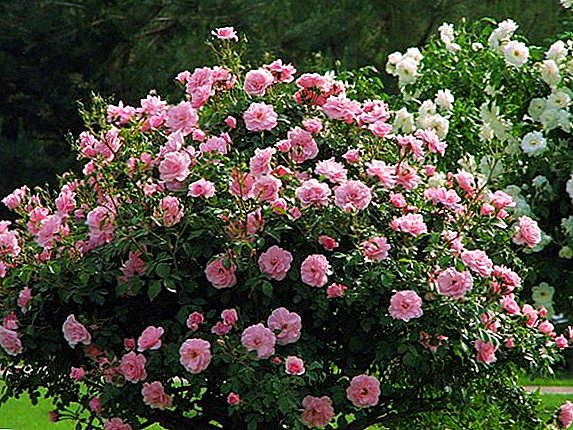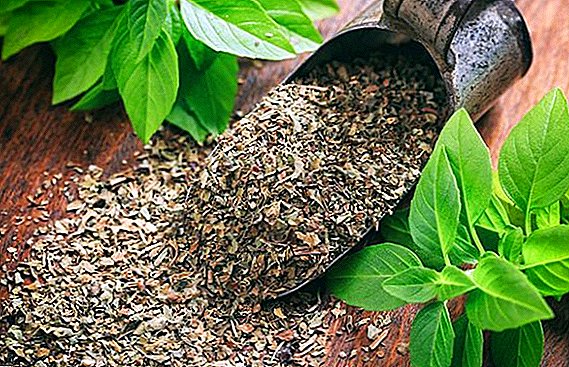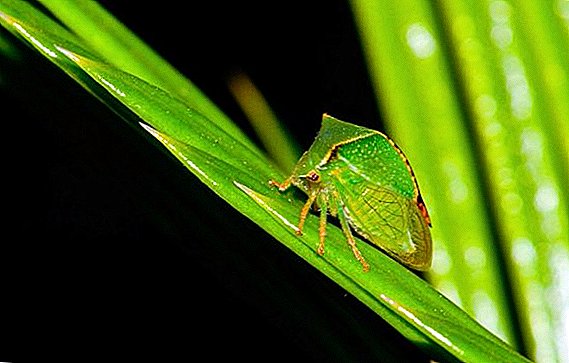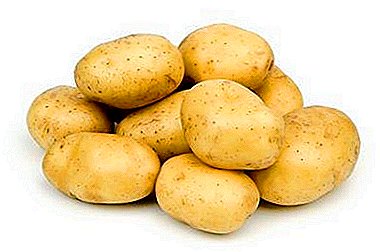
Potatoes - one of the most common foods in the human diet. Potato cultivation is quite a laborious process, requiring considerable effort to obtain a decent result in the form of a rich harvest.
Plowing the ground, sowing the seeds, spuding, weeding, treating from harmful insects and weeding again - how much precious time was spent on the routine work! But the inquisitive summer residents found for themselves a “new” method - growing potatoes without weeding and hilling. This article provides tips on how to get a good harvest without weeding and hilling.
What it is?
Different materials are used as a coating.:
- special black film (agrofibre), which passes moisture, but prevents the growth of weeds;
- pieces of cardboard;
- hay or straw.
 Moreover, the seeds do not necessarily bury. You can create “nests” right on the surface of the earth, for example from straw, and just wait for the result (how to grow potatoes under straw, read here).
Moreover, the seeds do not necessarily bury. You can create “nests” right on the surface of the earth, for example from straw, and just wait for the result (how to grow potatoes under straw, read here).
The method without weeding and hilling includes planting potatoes not only on the site, but also in special devices, such as:
- boxes;
- boxes;
- barrels;
- bags.
The method without hilling pays off good yields. You can also hear a lot of summer residents and positive reviews, who tried him summer residents.
Productivity
The advantage of this technique is that the mulch (coating) creates an excellent microclimate for growing large volumes of the crop with a minimum expenditure of resources. As practice shows, from one bush you can get about 15-20 potatoes weighing up to 300 grams, and this is an excellent result, given the minimum effort.
Advantages and disadvantages
Benefits of using straw for growing potatoes:
- Straw perfectly retains moisture. The soil, and with it the seeds, even on the hottest days will be protected from overheating and drought. Of course, in the absence of rain, it is still recommended to water the plants, but this can be done much less often and less plentifully.
- Over time, the straw will begin to decompose and turn into humus. Along with the development of carbon dioxide useful for the soil, worms and microorganisms will appear that promote the growth and development of tubers.
- Weeding will cease to be a painful duty, because weed sprouts find it difficult to break through the light through a significant layer of mulch.
- Insects settled in the straw are excellent allies in the fight against Colorado beetles.
- There will be no need to spud the bushes, as the roots will not be deep underground.
- Due to the absence of adhering lumps of earth, fruit picking will be easier, more pleasant and faster without auxiliary equipment.
- Straw will be an excellent fertilizer after harvest. If you slightly prikopat its land, the beneficial bacteria will remain and remain effective for next year.
Of the minuses of this method it is worth noting:
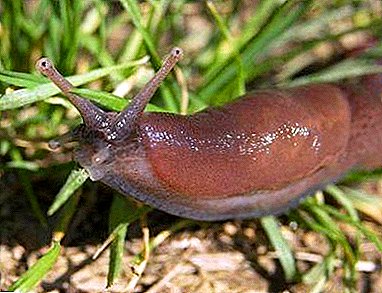 Rodents. Spikelets remain on the straw, attracting mice, which in turn can spoil part of the crop. Fortunately, you can fight pests by planting such useful plants as elder, mint, wild rosemary, wormwood, tansy or chamomile.
Rodents. Spikelets remain on the straw, attracting mice, which in turn can spoil part of the crop. Fortunately, you can fight pests by planting such useful plants as elder, mint, wild rosemary, wormwood, tansy or chamomile.- Slugs. Humid environment is ideal for the habitat of this species of pests. Special traps will help fight them. For the same reason, it is not advisable to place cabbage beds next to potatoes.
- Trouble with harvesting hay or straw. This can also be attributed to the minuses, because with their lack of tubers can turn green, which will lead to a deterioration in the taste of the fruit.
The necessary conditions
To increase the effectiveness of this method of growing potatoes, certain conditions must be met.
Choose seed potatoes wisely
It is believed that any potato will be suitable for such a cultivation technique.
Despite the fact that many vegetable growers prefer the Dutch varieties, we should not neglect the domestic ones.
Perhaps they are less productive, but more resistant to adverse conditions. In the southern regions of these varieties are perfect:
- Condor for its taste and stability in storage.
- Impala for high yield.
- Red Scarlett for precocity.
For the northern regions are widely used varieties: Kholmogorsky and Antonina.
Seed potatoes should have strong, juicy shoots, while dried fruits will reduce the chances of getting a rich harvest.
You can make your own seeds for planting. For this you need:
- Put the potatoes in boxes or boxes and put in a bright warm room for 3-4 weeks before planting on the site.
- Pick up the roots of the size of a chicken egg. Large potatoes can be cut, but sprouts should remain on each part.
What tool will you need?
The main tool that will be required for this method is coating. If the film or cardboard is not a problem to find, then you will have to tinker with hay and straw. The material should be enough for at least two styling. The straw can be used next year, covered in a dry, secure room..
Correct fertilizers and land are the key to success.
 A mixture of humus and ash is excellent as a fertilizer. If the ground is infected with a wireworm, you can spread onion peel next to the planted potato, which scares the Colorado beetles. It is recommended to change the planting site every year so that the potatoes do not degenerate.
A mixture of humus and ash is excellent as a fertilizer. If the ground is infected with a wireworm, you can spread onion peel next to the planted potato, which scares the Colorado beetles. It is recommended to change the planting site every year so that the potatoes do not degenerate.
Effectively plant potatoes on a peat layer, saturated with phosphorus and nitrogen. From organic fertilizers, preference is given to urea. Land for planting potatoes, it is desirable to cook in the fall. If the plot is overgrown with weeds, it is not necessary to weed and dig it up several times. It is enough just to turn the top layer of the sod so that the green is on the bottom and the roots are on the top.
Throughout the winter, the grass will sweep, and by spring an excellent soil rich in nutrients will form. You should not be afraid that weed seeds, having showered, will germinate again, because the straw cover will prevent this process.
Finally, it is possible in the autumn to sow the area designated for potatoes by crops such as mustard, rye or oats. They not only nourish the soil with useful vitamins, but also help in the fight against boring weeds.
Grown stalks are cut and left right in the garden beds. For cover, you can cut the grass in the spring, before it gives seeds.
Landing methods
You can plant potatoes in different ways:
- The easiest way is to lay out sprouted potatoes in rows in rows to the bottom and cover it with a “cap” of straw. The first layer of the coating should not be too dense otherwise the sprouts will not be able to break through. A serious drawback may be the instability to gusts of wind, which often breaks the straw. This can be avoided by lightly sprinkling the cover with earth or by laying between the rows of the board.
After the emergence of shoots, it is necessary to compact the material around the stems so that the potatoes do not turn green under the scorching sun. Harvesting is quite simple: you can rake up the straw with your hands and collect the roots.
Straw tends to settle, so re-covering of the bed will be required.
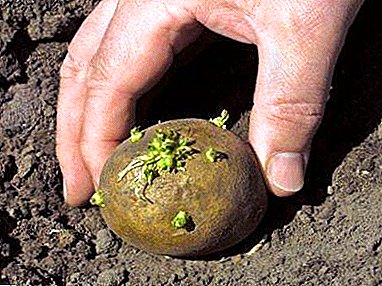 The second method involves the creation of a shallow hole or furrow 10 to 15 centimeters deep. Seeds are also laid out in a row at a distance of about 30 - 40 centimeters. If the soil is saturated and fat, you can simply lay the straw on top, but if it is dry, it is recommended to lightly sprinkle the seeds with earth. The coating layer is laid out about 20-25 centimeters.
The second method involves the creation of a shallow hole or furrow 10 to 15 centimeters deep. Seeds are also laid out in a row at a distance of about 30 - 40 centimeters. If the soil is saturated and fat, you can simply lay the straw on top, but if it is dry, it is recommended to lightly sprinkle the seeds with earth. The coating layer is laid out about 20-25 centimeters.After the emergence of shoots it is necessary to add straw around the stem of another centimeters by 20 in height. Harvesting does not take much time - when the tops are dry, you only need to push the mulch with a rake, lift the stem and gather the roots.
Root care
The beauty of the method described in the article is that special care after landing is not required. The issue of weeds is almost completely closed, there is no need for hilling, since the tubers are not located underground, but under the cover. If straw is used, it is important to correct it in time so that there are no gaps and the roots are not green. You need to water the potatoes, if necessary, in dry weather - that's the whole care.
In conclusion, we note that the method of growing potatoes without weeding and hilling described in the article was previously widely used and showed excellent results. High productivity combined with ease of use attract an increasing number of both experienced vegetable growers and simply amateur gardeners. As it turned out, it is quite possible to enjoy work and collect rich harvests without any extra effort.


 Rodents. Spikelets remain on the straw, attracting mice, which in turn can spoil part of the crop. Fortunately, you can fight pests by planting such useful plants as elder, mint, wild rosemary, wormwood, tansy or chamomile.
Rodents. Spikelets remain on the straw, attracting mice, which in turn can spoil part of the crop. Fortunately, you can fight pests by planting such useful plants as elder, mint, wild rosemary, wormwood, tansy or chamomile. The second method involves the creation of a shallow hole or furrow 10 to 15 centimeters deep. Seeds are also laid out in a row at a distance of about 30 - 40 centimeters. If the soil is saturated and fat, you can simply lay the straw on top, but if it is dry, it is recommended to lightly sprinkle the seeds with earth. The coating layer is laid out about 20-25 centimeters.
The second method involves the creation of a shallow hole or furrow 10 to 15 centimeters deep. Seeds are also laid out in a row at a distance of about 30 - 40 centimeters. If the soil is saturated and fat, you can simply lay the straw on top, but if it is dry, it is recommended to lightly sprinkle the seeds with earth. The coating layer is laid out about 20-25 centimeters.